Told To Increase Your Fiber Intake? This Info Will Make It Easier For You
Have you been advised to increase your fiber intake? According to the American Society for Nutrition, only 7% of Americans consume enough fiber. However, it’s important to note that not all fiber is the same, and consuming the wrong type can worsen digestive symptoms. We provide essential information on soluble and insoluble fiber, along with the best strategies for maintaining optimal digestive health.
How Much Fiber Is Recommended?

The DRI or “daily recommended intake” of fiber for adults is 25-38 grams per day (women should aim for 25, and men 38). The average adult consumes only 15 grams per day, a significant deficit. One must make an effort to consume fiber-rich foods at every meal and most snacks in order to hit this target goal.
Why Is Fiber Important?

Fiber is an essential nutrient for overall health as it provides benefits for a multitude of health conditions including IBS (when chosen correctly), cardiovascular disease, cancer, diabetes, weight management, and more.
Several fiber sources are considered prebiotics which stimulate the growth of the beneficial gut bacteria leading to a more diverse and healthier gut microbiome.
Fiber intake is often compromised with a typical American diet, which can have adverse effects on beneficial gut bacteria and IBS symptoms. Constipation may worsen if fiber intake plummets.
Soluble Fibers
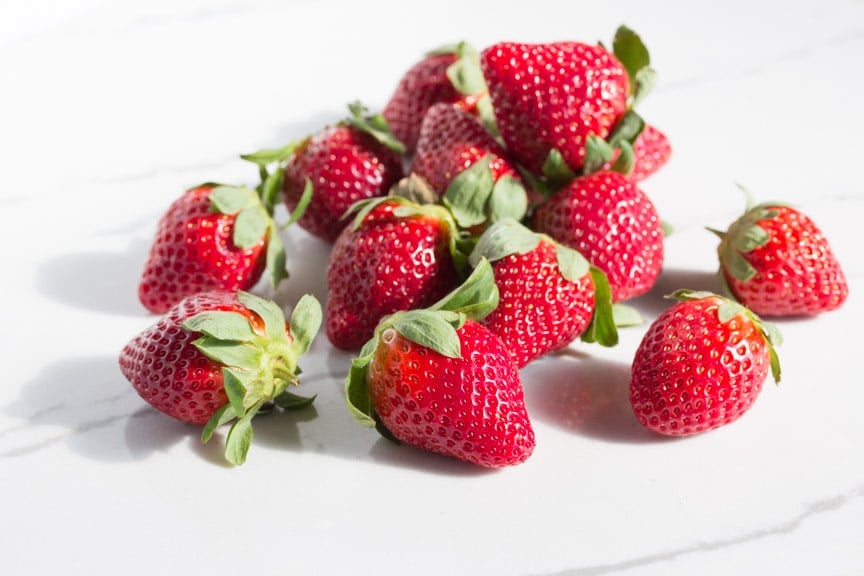
Soluble fibers dissolve in water, pull water into the stool, and form a gel like substance that helps move contents down the GI (gastrointestinal) track. Soluble fibers are found in many foods such as oats, strawberries, citrus fruit, rice, potatoes, beans, broccoli, and carrots.
Insoluble Fibers
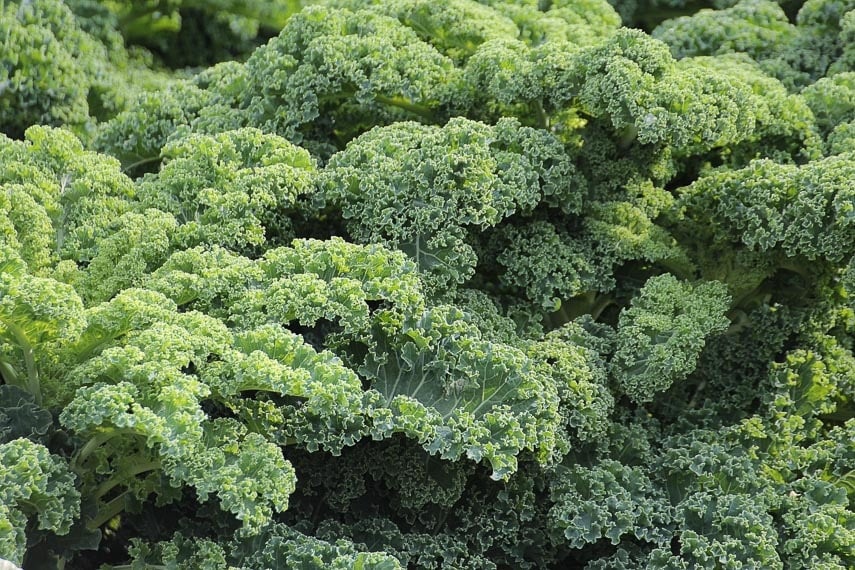
Large, coarse insoluble fibers help regulate bowels in healthy individuals by irritating the lining of the large intestine inducing a bowel movement. These fibers are often referred to as roughage and add bulk to stool. Insoluble fibers pass through the GI tract without change. Insoluble fiber sources include wheat bran, nuts, seed hulls, kale, blackberries, cauliflower and fruit skins to name a few.
IBS-C: As In Constipation
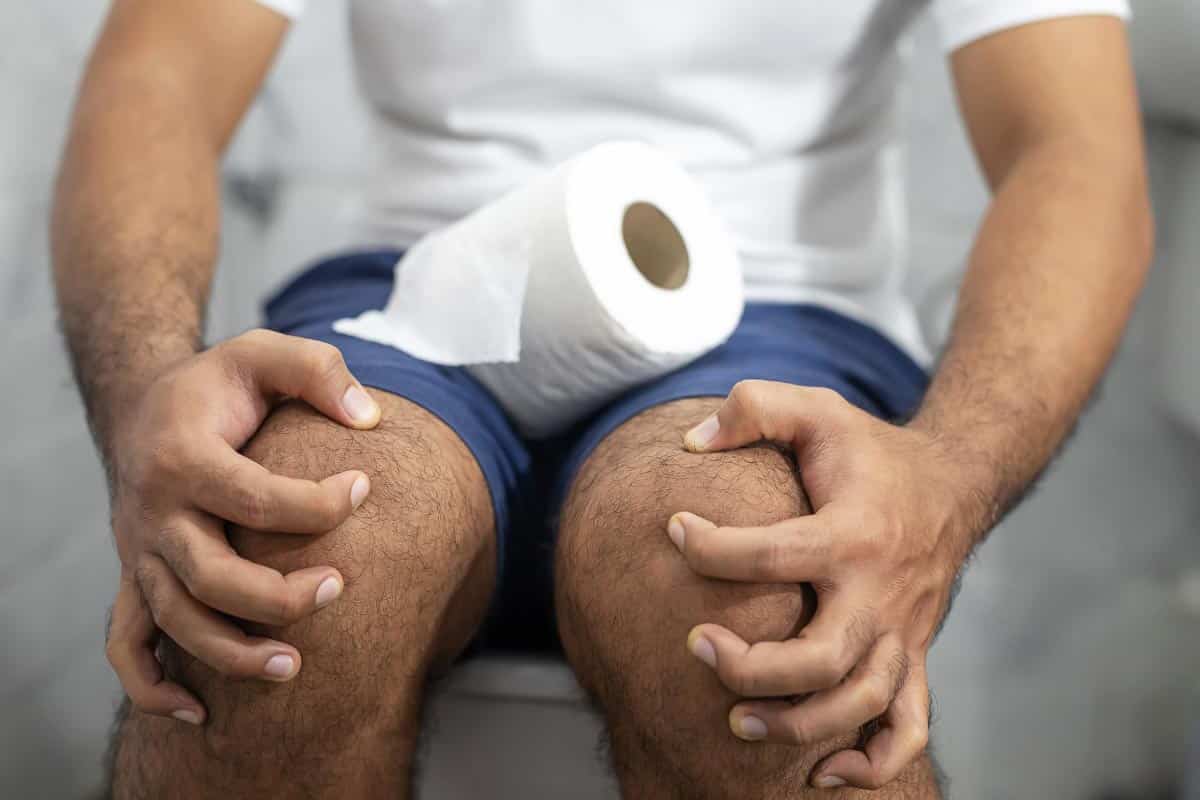
Fiber is crucial for regular bowels. If you feel that you all already hitting or exceeding your fiber goal and you are still experiencing gas and bloating, you may also be experiencing back up bloating due to inadequate elimination.
Back up bloating can occur in those with slow gut transit time and constipation, due to a build up of stool and gas. It is important to ensure you have an effective bowel regimen in place to allow for adequate laxation when fiber intake is high, this may require modifications such as postural changes when toileting (check out the squatty potty), the addition of osmotic laxatives, and/or magnesium salts. Read more here.
IBS-D: As In Diarrhea
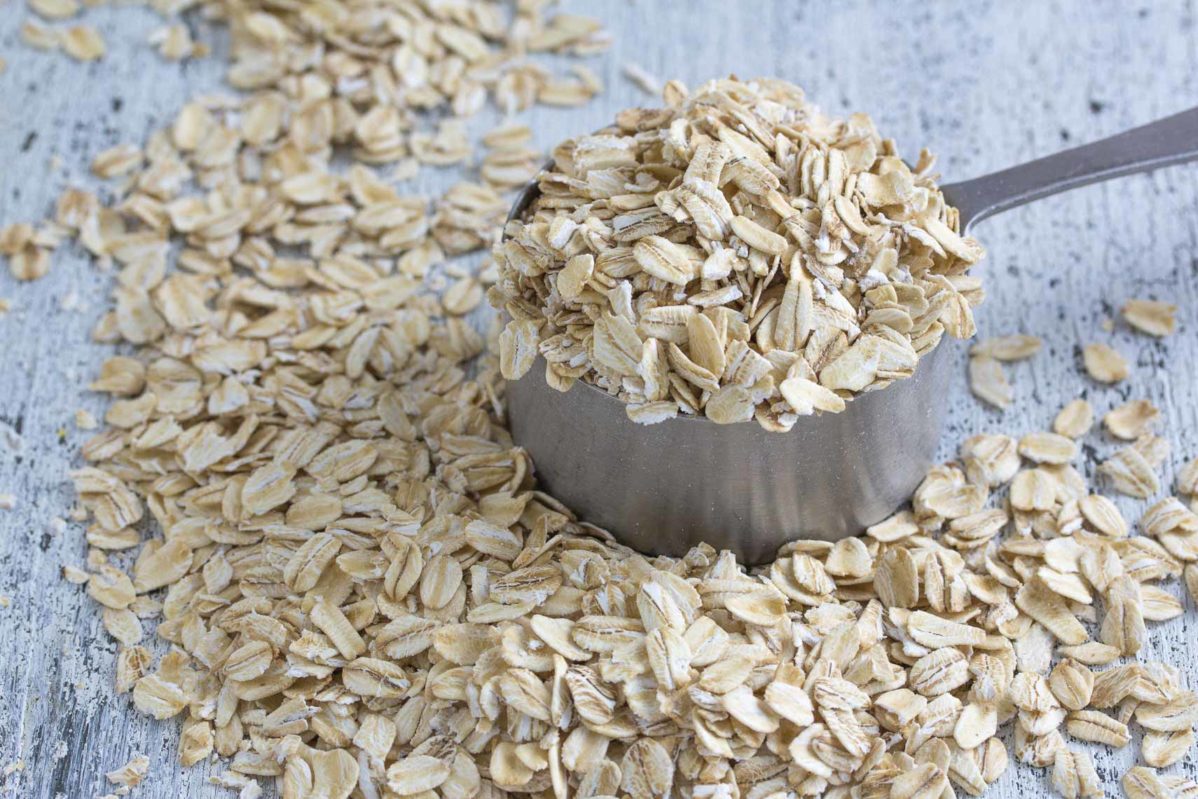
IBS- D patients think fiber is bad since it is associated with more frequent bowels. It is important to remember that fiber (specifically soluble) can act as a bulking agent AND can help bind stools, working magic for those suffering from diarrhea.
Try increasing soluble fibers such as oats, beans, flaxseeds, chia seeds, and fruits and vegetables to boost this beneficial fiber.
Hydrate, Hydrate Hydrate!

Always remember to drink adequate water intake when increasing fiber intake since risk of constipation is more likely to occur if we are dehydrated, plus the extra fiber requires extra water for digestion.
Fiber At Breakfast
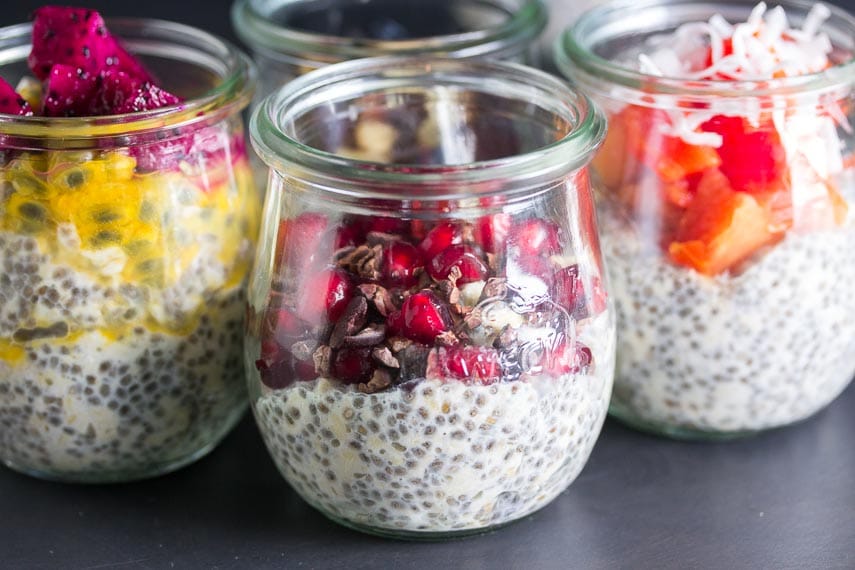
Try these fiber-rich ideas for breakfast: ⅓ cup (34 g) dry oats cooked in water or milk (lactose-free, if desired), 2 tablespoon walnuts pieces, 1 tablespoon chia seeds, and ¼ cup (40 g) fresh or frozen blueberries. Or how about Overnight Oats & Chia?
Fiber At Lunch

Try these fiber-rich ideas for lunch: 3 cup (112 g) mixed low greens (such as arugula, kale and lettuce), ¼ cup (42 g) canned and drained chickpeas, 1-2 tablespoon shredded cheese, 10 chopped almonds, and ⅓ cup (52 g) cooked quinoa, and salad dressing.
Fiber For Snacks
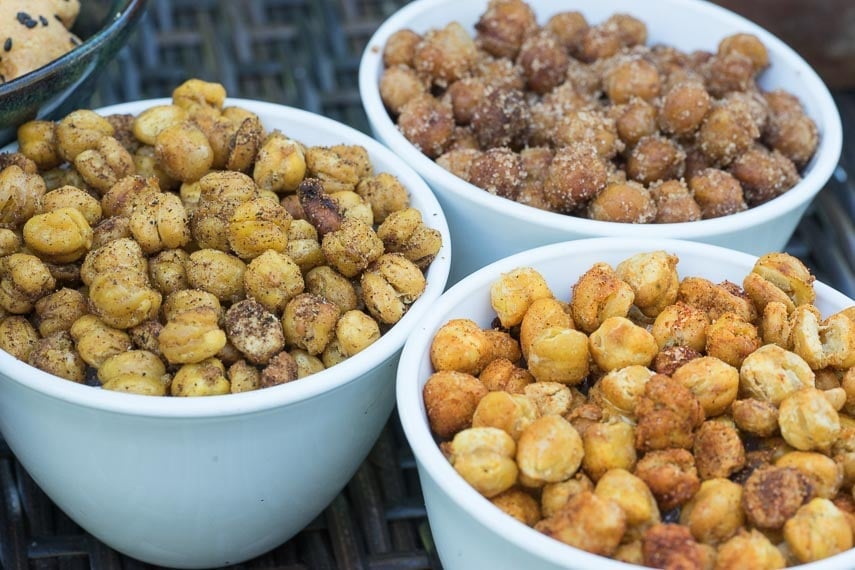
Try these fiber-rich ideas for snack: Brown Rice Cake + 1 small ripe banana + 1 tablespoon peanut butter or almond butter. How about a couple cups of popcorn? Roasted chickpeas, edamame, or how about some chia pudding?
Fiber at Dinner
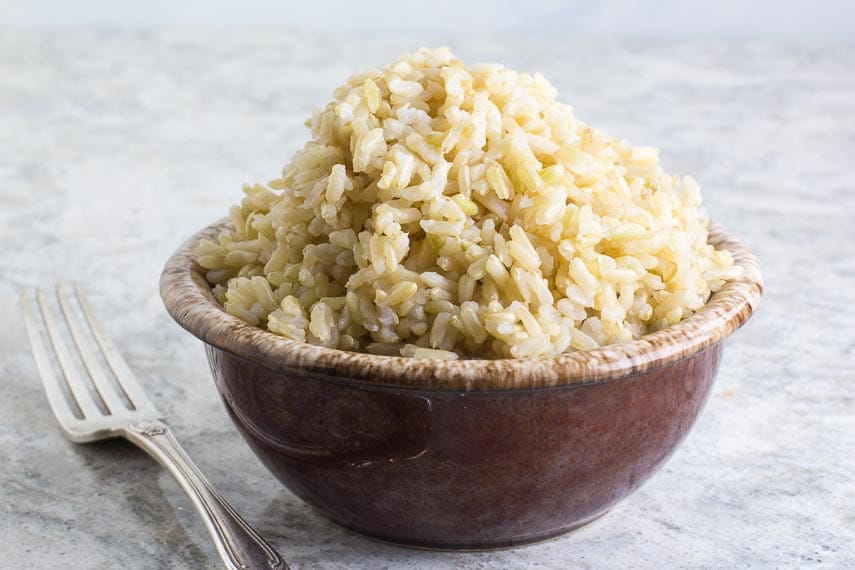
Try these fiber-rich ideas for dinner: 3-ounces (85 g) protein of choice (chicken, fish, beef, etc.), 12 green beans, 1 cup cooked carrots, and 1 cup (180 g) cooked brown rice.
Fiber Supplements
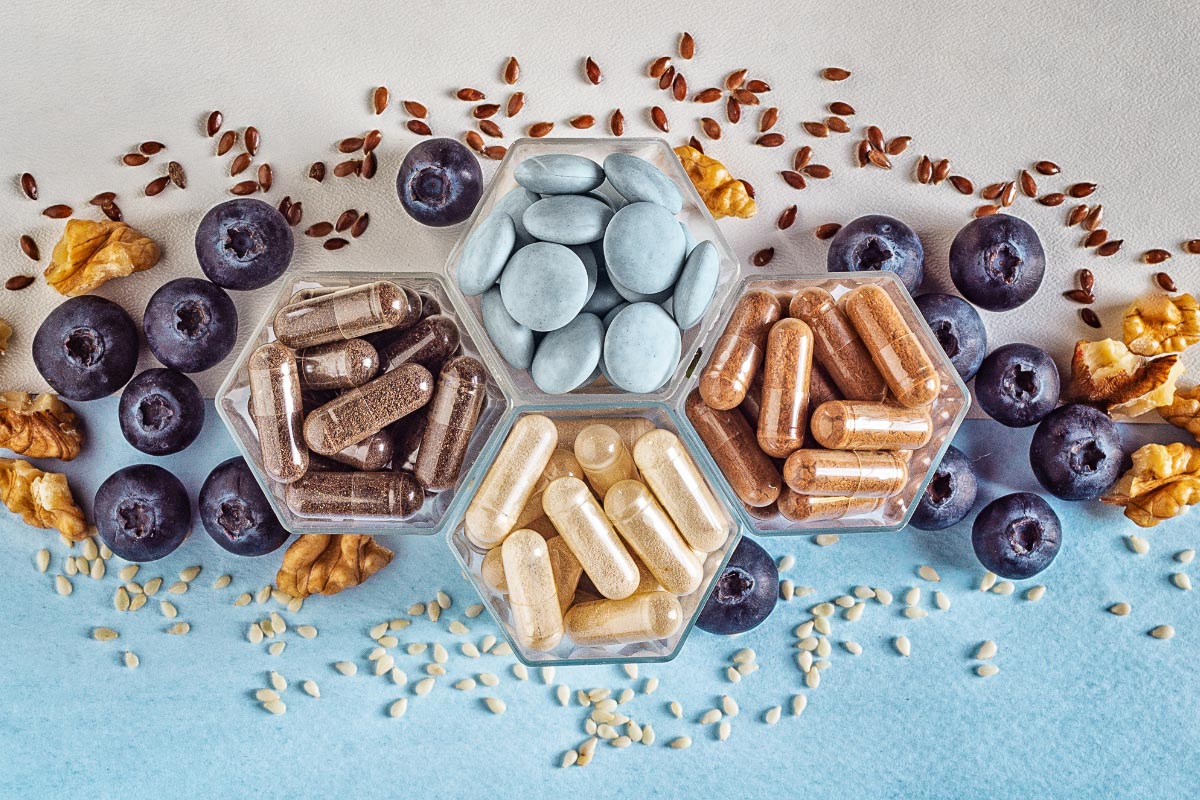
Should you be taking a fiber supplement? Remember this is not a one size fits all situation. There are several fiber supplements that are appropriate for IBS. Please speak with your dietitian or health care provider to see if a fiber supplement is appropriate for you.
Which Fiber Is Right For You?

Please make sure you work with your Registered Dietitian to determine which fiber food or supplement is right for you. Fiber might make a huge difference for your digestive health, but only if you are eating or taking the right one for your personal needs.
Are You At Risk For Shingles? Expert Insights And Prevention Tips You Can’t Miss!
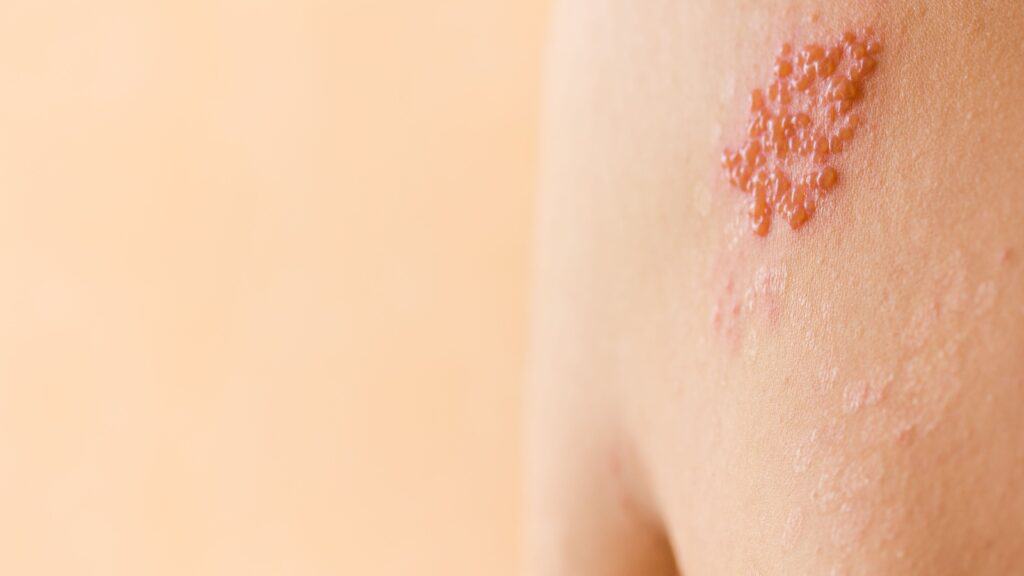
Shingles, also known as herpes zoster, is a viral infection that results in a painful rash. It is caused by the varicella-zoster virus, the same virus that causes chickenpox. After a person recovers from chickenpox, the virus can remain dormant in the body and reactivate years later as shingles.
READ: Are You At Risk For Shingles? Expert Insights And Prevention Tips You Can’t Miss!
Science Tells Us What To Expect As We Age: Strategies For Thriving In Later Life

that pertain to us all. Aging gradually alters people over decades, a long period shaped by individuals’ economic and social circumstances, their behaviors, their neighborhoods, and other factors. Also, while people experience common physiological issues in later life, they don’t follow a well-charted, developmentally predetermined path. Let’s take a look at what science has told us to expect. READ: Science Tells Us What To Expect As We Age: Strategies For Thriving In Later Life
Join Us

Join us on this empowering journey as we explore, celebrate, and elevate “her story.” The Queen Zone is not just a platform; it’s a community where women from all walks of life can come together, share their experiences, and inspire one another. Welcome to a space where the female experience takes center stage. Sign up for our newsletter so you don’t miss a thing, Queen!




